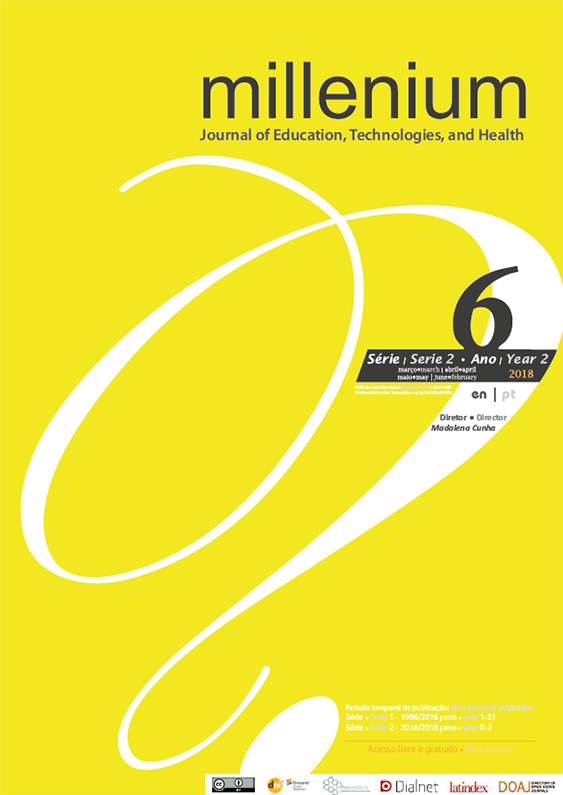Patient safety culture: study of some intervening factors
DOI:
https://doi.org/10.29352/mill0206.03.00174Keywords:
Safety culture, Quality of care, CommunicationAbstract
Introduction: Patient’s safety has a multidimensional and multidisciplinary character. In its multidimensional nature, WHO highlights the importance of the quality interaction and communication as determinants of quality and safety in health care delivery.
Objetive: To analyze the extent to which sociodemographic and professional variables influence nurses’ communication skills and what the impact of nurses’ communicational competencies on the safety culture of care.
Methods: A quantitative, descriptive-correlational, analytical and cross-sectional study with a sample of 138 nurses. We used the Hospital survey on Patient Safety Culture (Eiras, 2011), and the Clinical Communication Skills Scale (ECCC), validated by (Ferreira; Silva & Duarte 2016) for the evaluation of communication skills.
Results: The population has 32.51 years as average, with a standard deviation of 7.958. They are mostly female (77.54%) with a degree (94.4%) and have, on average, 9.41 years of professional experience. Age, marital status, work experience does not influence the safety culture of the patient. After the inferential analysis through a multivariate multiple regression, we note that all manifest variables (Years of professional experience, collects information, share information and allows to terminate the dialogue) showed significant values. The greater the years of professional experience less punitive error response.
Conclusions: The results point to the importance of some variables in the patient’s safety culture. This reality is circumscribed by new presuppositions and attitudes; Professionals who have to attend, in a timely manner, the evolution of knowledge, ensuring safe practices, assuring the quality of the care provided.
Downloads
References
Antunes, N. S. (2015). Notificação de incidentes e segurança do doente: Perceção dos enfermeiros (Dissertação de mestrado, Instituto politécnico de Viseu, Escola Superior de Saúde)
Babiker, A., El Husseini, M. E., Nemri, A. A., Frayh, A. A., Juryyan, N. A., Faki, M. O., Assiri, A., Saadi, M. A., Shaikh, F., & Zamil, F. A. (2014). Health care professional development: Working as a team to improve patient care. Sudanese Journal Of Paediatrics, 14(2) 9-16.
Costa, M. F. S. P. (2014). Cultura De Segurança Do Doente Num Hospital Da Região Centro, Percepção Dos Profissionais. (Dissertação de Mestrado). Universidade de Coimbra
Eiras, M. (2011). Avaliação da cultura de segurança do doente em meio hospitalar: Investigação ação numa unidade de radioterapia (Tese de doutoramento, Universidade de Lisboa).
Ferreira, M., Silva, D., & Duarte, J., (2016). Estudo psicométrico da escala de competências de comunicação clinica (ECCC). Millenium, 2(ed espec nº1), 287-299.
Fragata J., Sousa P., & Santos R. S. (2014). Organizações de saúde seguras e fiáveis/confiáveis. In Sousa, P., Mendes, W., (Eds.), Segurança do paciente, criando organizações de saúde seguras. Rio de Janeiro: Editora Fiocruz
Garcia, C. (2015). Cultura de segurança na criança hospitalizada num centro hospitalar da zona Centro - perceção dos enfermeiros. Dissertação de Mestrado, Escola Superior de Saúde de Viseu.
Kohn, L. T., Corrigan, J., & Donaldson, M. S. (2000). To err is human: Building a safer health system. (L. T. Kohn, J. Corrigan, & M. S. Donaldson, Eds.). Washington DC: National Academies Press, Institute of Medicine. https://doi.org/10.17226/9728
Mendes, C., & Barroso, F. (2014). Promover uma cultura de segurança em cuidados de saúde primários. Revista Portuguesa de Saúde Pública, 32(2), 197-205. https://dx.doi.org/10.1016/j.rpsp.2014.06.003
Nogueira, J. W. S., & Rodrigues, M. C. S. (2015). Comunicação efetiva no trabalho em equipe em saúde: Desafio para a segurança do paciente. Cogitare Enferm. 20(3):636-640
OMS. (2008). World alliance for patient safety: Forward programme 2008 – 2009. 1st ed Consultado http://www.who.int/iris/handle/10665/70460
Pereira, N. G. G. (2008). Comunicação de enfermeiro/utente num serviço de urgência (Dissertação de mestrado, Universidade Aberta de Lisboa).
Phaneuf, M. (2005). Comunicação, entrevista, relação de ajuda e validação. Lusociência: Edições Técnicas e Científicas, Lda
Pimenta L. C. (2013). Avaliação da cultura de segurança do doente e propostas de melhoria (Dissertação de mestrado, Escola Superior de Tecnologia da Saúde de Lisboa, Instituto Politécnico de Lisboa; Escola Superior de Saúde da Universidade do Algarve). Acedido em http://hdl.handle.net/10400.21/2929
Portugal, Ministério da Saúde, Direcção Geral da Saúde. (2015, A). Norma nº 025/2013 atualizada a 19/11/2015: Avaliação da Cultura de Segurança do Doente nos Hospitais. Lisboa: DGS. Acedido em https://www.dgs.pt/directrizes-da-dgs/normas-ecirculares-normativas/norma-n-0252013-de-24122013.aspx
Reis, C. T. (2014). Cultura em segurança do paciente. In Mendes, P. S. W. (Eds.), Segurança do Paciente criando Organizações de Saúde Seguras (1ªed., pp 75-99). Rio de Janeiro: Editora Fiocruz
Santos, M. C., Grilo, A., Andrade, G., Guimarães, T., & Gomes, A. (2010). Comunicação em saúde e a segurança do doente: Problemas e desafios. Revista Portuguesa de Saúde Pública, 28(vol. temático 10), 47-57. Acedido em http://hdl.handle.net/10400.21/3120
World Health Organization (2007a). Patient safety: The nine patient safety solutions. Acedido em: http://www.who.int/patientsafety/events/07/02_05_2007/en/
Downloads
Published
How to Cite
Issue
Section
License
Authors who submit proposals for this journal agree to the following terms:
a) Articles are published under the Licença Creative Commons (CC BY 4.0), in full open-access, without any cost or fees of any kind to the author or the reader;
b) The authors retain copyright and grant the journal right of first publication, allowing the free sharing of work, provided it is correctly attributed the authorship and initial publication in this journal;
c) The authors are permitted to take on additional contracts separately for non-exclusive distribution of the version of the work published in this journal (eg, post it to an institutional repository or as a book), with an acknowledgment of its initial publication in this journal;
d) Authors are permitted and encouraged to publish and distribute their work online (eg, in institutional repositories or on their website) as it can lead to productive exchanges, as well as increase the impact and citation of published work
Documents required for submission
Article template (Editable format)





